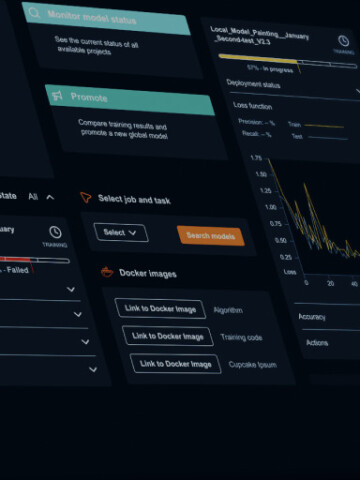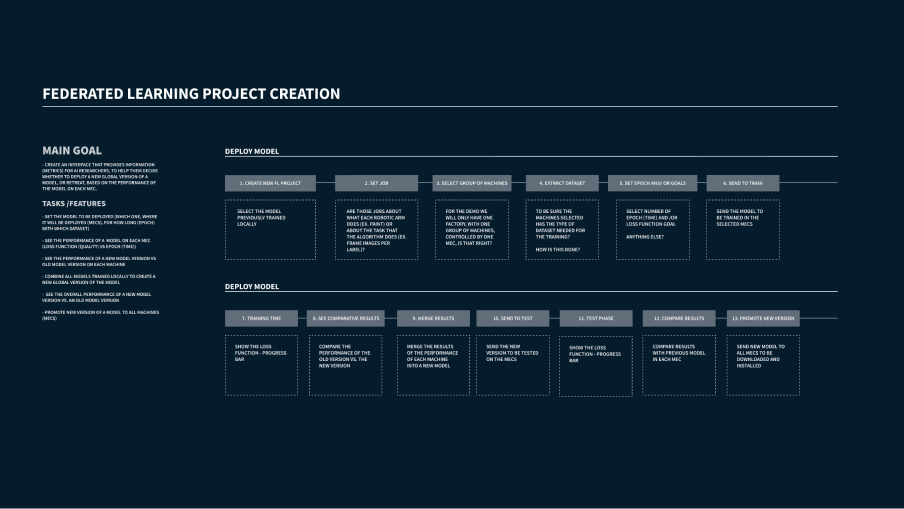
Helping robots learn from each other while keeping client data secure
April 25, 2024
How can car assembly robots share sensitive data while keeping that data hidden from competitors?
That was the complex challenge Hitachi brought to us. And we rose to it. Bringing together specialist talent from our AI, design and dev teams, we designed a unique Federated Learning Architecture and user dashboard. This made local sensor data centrally visible to Hitachi’s researchers, while ensuring secure data monitoring across their entire global fleet. So we could enable sharing, while protecting sensitive data.
Teams could share ideas organically as things evolved.

Harnessing talent and tech
As with any technical innovation project, communication between design, AI and development was critical to finding a robust, holistic solution. To strengthen these synergies and explore dashboard concepts, we created collaborative Figma wireframes. These showed potential journeys, interactions and information for future users.
This was key in steering the development team on which APIs they should build for each step. It also enabled the front-end developers to get on with creating dashboard components, even before a visual line for the interface had been considered.
Evolutionary progress
As the project developed, our evolving understanding of the Federated Learning Architecture helped us refine the interface, making it more usable and intuitive. And we were able to collaborate asynchronously using feedback tools, so teams could share ideas organically as things evolved – helping us streamline the workflow.
Once content, flow, and interactions were mode defined, we started work on the look and feel of the UI. Inspiration came from Hitachi’s brand identity, as well as other Data Visualization tools that reflected their brand. We chose a dark-mode design to reduce the visual load, minimize distractions and improve readability. This enabled Hitachi’s researchers to make decisions more easily.
Leveraging our adaptive advantage
Sngular’s integrated approach to this project put Hitachi ahead of the game. Upending the traditional chronological process, which can be slow and inflexible, we combined the talents of our UX, AI, and front and backend dev teams to work in parallel collaboration. This enabled rapid and continuous improvement – giving this multinational brand the competitive edge.
Curious?
Learn how [Sngular design] can give your business the adaptive advantage.